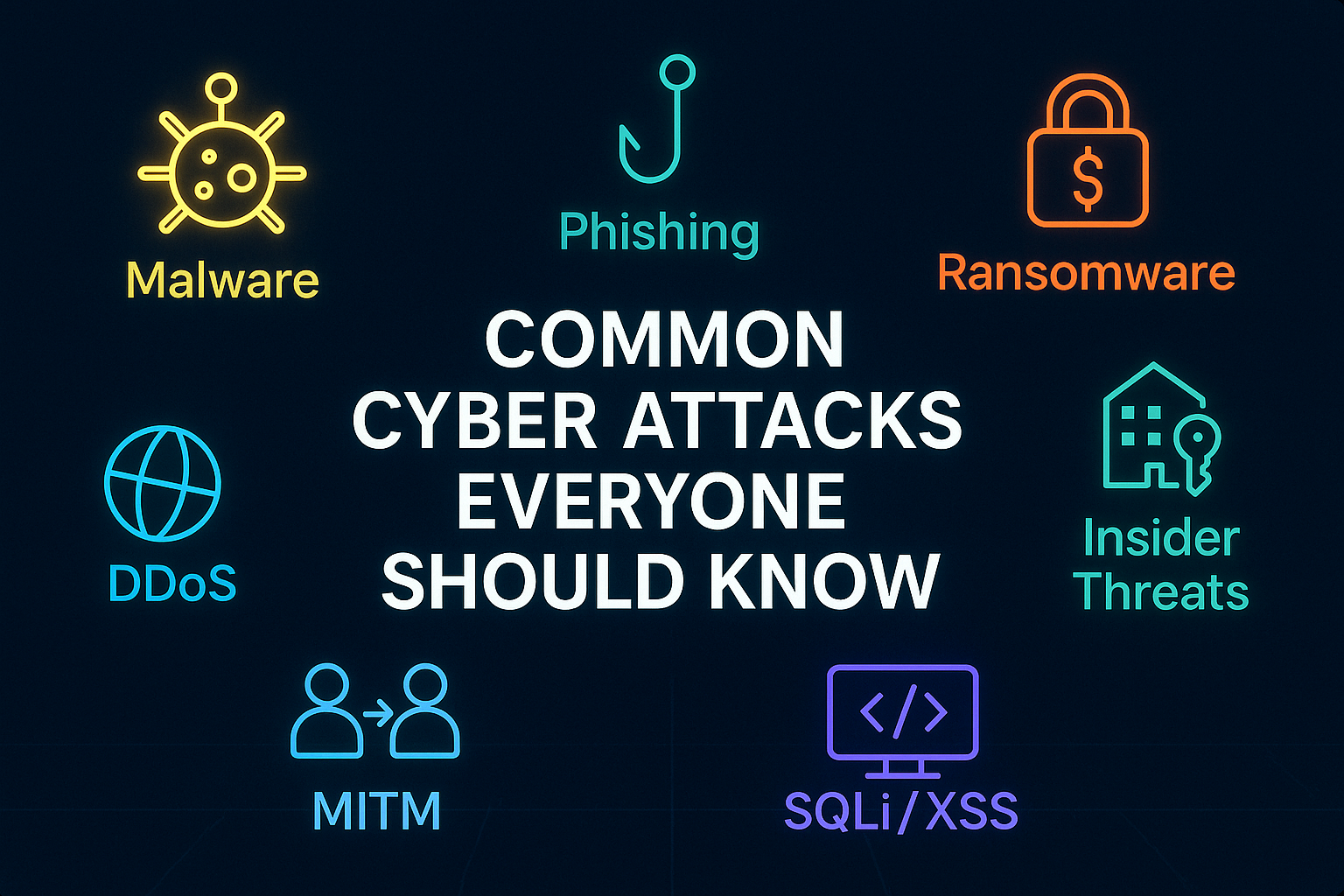Malware, phishing, ransomware, DDoS, MITM, SQLi/XSS, and insider threats – explained simply with practical defense tips for teams and small businesses.
Sep 18, 2025
Cyberattacks are no longer a problem only for large corporations. Small and medium-sized businesses are often targeted because they lack resources and dedicated security teams. The good news: with the right habits and a few key technologies you can significantly reduce risk, minimize damage, and recover faster.
In this article, we cover the 7 most common threats – with a short explanation and concrete defense steps. Use the lists as an internal checklist for your team or as a starting point for your cybersecurity plan.
Viruses, worms, trojans, and ransomware that infect systems to steal, encrypt, or destroy data.
Fake emails/messages trick you into sharing passwords or clicking dangerous links. Spear phishing targets specific people.
Encrypts your data and demands payment. Often spreads through phishing or vulnerable RDP/VPN services.
Overwhelms your site/service with traffic until it becomes unavailable. Usually powered by botnets.
Attackers intercept or alter traffic – often on public Wi-Fi or misconfigured systems.
Exploiting input/output vulnerabilities to read/change data or execute scripts in your apps.
Deliberate abuse or mistakes from employees/partners with legitimate access.
Most incidents can be prevented with basic hygiene, regular backups, and clear access rules. Start with the checklist above and expand based on your environment’s risks. If you need a tailored plan and tools, our team can help prioritize and implement measures with maximum effect for your budget. Contact us for a quick consultation.